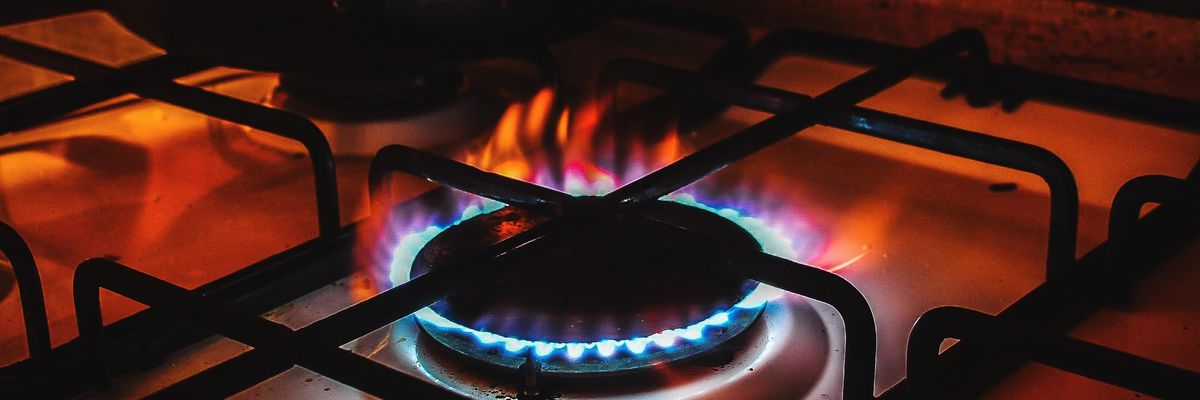As policymakers across the United States consider bans on gas hookups in new construction, Stanford University researchers revealed Thursday that gas-burning cook stoves--coveted by many homeowners--are even worse for the global climate and human health than previously thought.
"Gas stoves warm the planet and release indoor air pollutants that you breathe--you get both."
"Surprisingly, there are very few measurements of how much natural gas escapes into the air from inside homes and buildings through leaks and incomplete combustion from appliances," said Eric Lebel, the new study's lead author, in a statement.
"It's probably the part of natural gas emissions we understand the least about," Lebel added, "and it can have a big impact on both climate and indoor air quality."
The study, published in the journal Environmental Science & Technology, focuses on the impacts of the potent planet-heating gas methane as well as nitrogen oxides, air pollutants that can trigger respiratory diseases.
As study co-author Rob Jackson toldBloomberg: "Gas stoves warm the planet and release indoor air pollutants that you breathe--you get both."
Outlawing gas service for new homes makes sense, "otherwise we're locking in greenhouse gas emissions for decades to come," he said. "The trickier question is how to swap out older stoves."
As municipalities and state governments move to restrict gas use, the fossil fuel industry has launched "local anti-electrification campaigns" and worked "aggressively" with state legislatures on laws that block cities from implementing cleaner building codes, Mother Jonesreported last year. Additionally, "for decades, sleek industry campaigns have portrayed gas stoves--like granite countertops, farm sinks, and stainless-steel refrigerators--as a coveted symbol of class and sophistication, not to mention a selling point for builders and real estate agents."
The Stanford study notes that over one-third of U.S. households--or about 40 million homes--cook with gas, and "in some states, the proportion is substantially higher; over 60% of households in California cook with gas, for instance."
The researchers measured the methane--which is over 80 times more potent than carbon dioxide for a 20-year period--in 53 California home kitchens when appliances were on and off. They examined 18 brands of gas cooktops and stoves that ranged from three to 30 years old.
"They're constantly bleeding a little bit of methane into the atmosphere all the time," Jackson told the Associated Press, explaining that 76% of the methane leaks were recorded when the appliances were off, which are emissions that the U.S. government doesn't consider.
According to the AP:
Jackson estimated that when all natural gas use and extraction is taken into account, about 100 million tons (91 million metric tons) of gas leaks into the atmosphere. And the couple million tons from gas stoves "is meaningful. That's a substantial part and it's a part that we haven't included accurately in the past."
"Using a 20-year timeframe for methane," the study states, "annual methane emissions from all gas stoves in U.S. homes have a climate impact comparable to the annual carbon dioxide emissions of 500,000 cars."
In a Stanford video about the study, Lebel said that "targeting the emissions from natural gas appliances is one of the low-hanging fruits that we have" to reduce methane levels.
"The mere existence of these gas stoves [is] really driving the emissions," he added. "It's not how much they're used, but it's the number of them and the leakiness of the stove while its off."
The researchers also measured emissions of nitrogen oxides--which can cause difficulty breathing and other health effects--from 32 cooktops and 24 ovens.
The U.S. Environmental Protection Agency does not have indoor air quality standards for nitrogen oxides, but the researchers found that the government's 100 parts per billion limit for one hour of outdoor exposure is "regularly exceeded if stoves are used without adequate indoor ventilation," such as not having a hood or not turning it on while cooking.
"I don't want to breathe any extra nitrogen oxides, carbon monoxide, or formaldehyde," Jackson said in a statement. "Why not reduce the risk entirely? Switching to electric stoves will cut greenhouse gas emissions and indoor air pollution."

